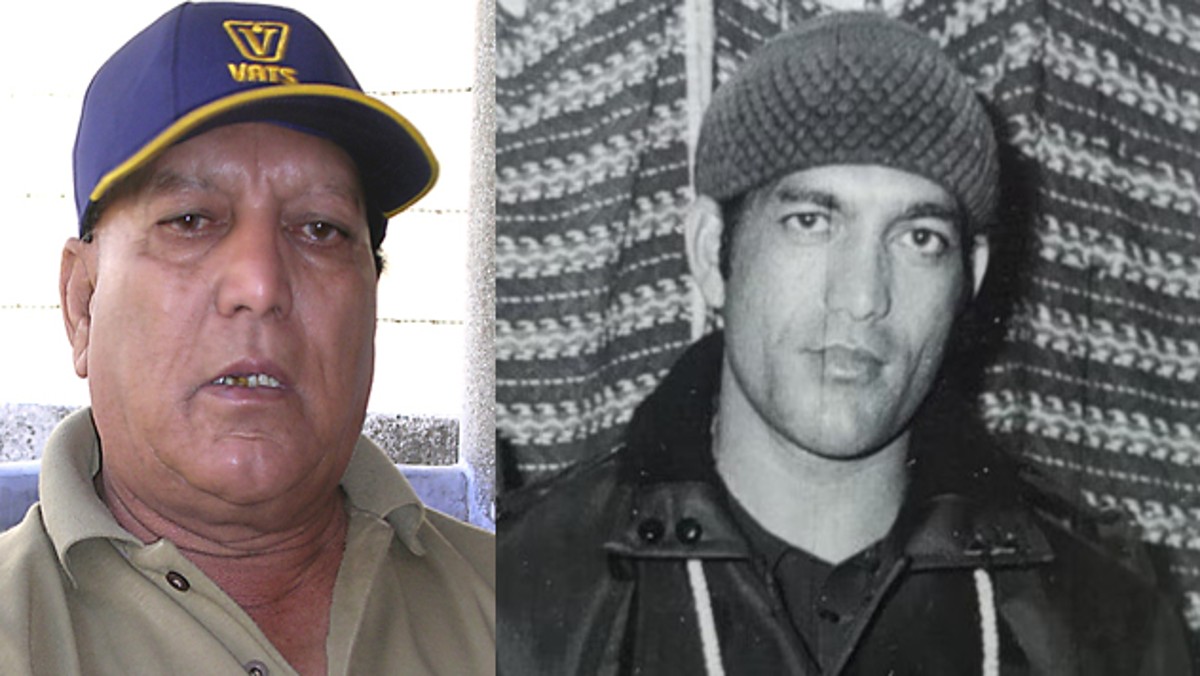Known as ‘Scooter’ in Indian football circles, Bhupinder Singh Rawat was one of India’s fastest-ever centre forwards. Despite his short stature of around 5.2 ft, Rawat could penetrate the opponent’s box in a split second, striking fear into the heart of the opposing defence. Even legendary defenders like Jarnail Singh and goalkeeper Peter Thangaraj were left awestruck by the movements of this spirited footballer. Many considered Rawat a contemporary of the iconic Indian footballer Neville D’Souza.
The 1968 Durand Cup witnessed the emergence of this exceptional centre forward, whose brilliance and sportsmanship captivated audiences and made him one of north India’s most beloved footballers. Bhupi Dai, as he was fondly called by footballers, died of illness in Surat, Gujarat last month on June 29, 2024.
Dramatic entry in Indian team
Bhupinder Rawat was the hero of the 1966 Durand Cup title win for the Gorkha Brigade (Dehradun). Despite performing well at the national level, he had to wait for many years to receive a call-up to the national team. Recalling his eventual selection for the Indian team, Rawat once shared, “The national camp was underway in Mumbai, and some selectors opposed my inclusion in the Indian squad for the 1969 Merdeka Cup (Malaysia). They argued that I was too short and couldn’t score goals with headers, thus not deserving a place. In the final selection match among camp participants, I silenced my critics by scoring three goals—all headers—to secure my spot in the Indian team.”
A dangerous forward
Bhupi Dai’s speed and accuracy were unmatched. He was constantly moving around the box to meet low crosses. As ex-India footballer Shyam Thapa states, “He was one of the fastest ever centre forwards produced by Indian football. In a 4-2-4 format, he used to be the most dangerous person on the field. After playing for India, coaching and watching football for so many years, I can say I have never seen a striker like Bhupi Dai. He got calls from many top clubs like East Bengal, Mohun Bagan and Mohammedan Sporting Club, but he decided not to play in Kolkata and stay with Mafatlal football club in Mumbai.” Shyam Thapa played with Bhupinder Rawat in the Mafatlal football team and shared a long, friendly and familial relationship.
Impact Shorts
More ShortsDurand Cup provided a new turn
The 1966 Durand Cup belonged to Bhupinder Rawat. He scored 12 goals in six matches to become the highest scorer of one of the oldest football tournaments in India. The old records of the Durand Cup are not available, but Mohammed Habib of East Bengal equalled Rawat’s 12-goal record in 1972. Bhupi Dai was on fire in the 1966 Durand Cup, scoring two goals each against the Sikh Regiment, Mohammedan Sporting, and Leader’s Club, and four goals against RAC (Bikaner). He also scored one goal each against Mohun Bagan and New Delhi Heroes. Rawat considered his full-length diving header against Mohun Bagan as the best goal of his 1966 Durand tournament. The Gorkha Brigade beat Mohun Bagan 2-0 in the semi-final to advance to the final.
“He used to capitalise on the fine passes of Amar Bahadur, Ranjit Thapa, and Tika Ram. They had an amazing understanding on the field. More than power, Bhupi’s placement was brilliant,” Shyam Thapa adds.
Early life
Bhupinder Rawat was born on March 4, 1939. He learned football in Dehradun and joined the Indian Army in 1960. He was a regular member of the Gorkha Brigade football team from 1961 to 68. After the Durand triumph, Bhupi and six other Gorkha Brigade players joined Mafatlal football club. Former Indian footballer and a close friend of Bhupinder Rawat, Ranjit Thapa says, “We were together in Mafatlal for so many years. In the 1966 Durand Cup, we scored 26 goals and conceded just 2 goals. That too without a proper coach.”
After retiring from football, Bhupi Dai was involved in coaching and later settled in Surat, Gujarat.
Big break
Bhupinder Rawat played exhibition matches against foreign clubs from the USSR (1965), Hungary (1967), and Burma (1968) in India. The big moment for Rawat came when he was selected for the Indian team for the Merdeka Cup in 1969. He was in the team with two other buddies from Dehradun - Amar Bahadur and Ranjit Thapa. India failed to impress in the Merdeka Cup and lost against Western Australia and Burma. The team registered one win against Singapore to finish eighth in the tournament.
A scooter ride
In 2009, Bhupinder Rawat came to Dehradun and I had a friendly meeting with him at Kaulagarh. After a brief interaction, we decided to pay a visit to former Indian footballer Amar Bahadur at his home in Jodi village. As the “Scooter” of Indian football hopped on my scooter, I couldn’t resist a chuckle: “Scooter sitting on a scooter.” He laughed heartily, and we set off. The journey was filled with his captivating stories about Indian football. As we passed through Garhi Cantt, he pointed out the grounds where he once played and the place he used to stay.
End game
Starting from a small place like Dehradun, Bhupinder Rawat made a big impact in Indian football. After a brief tenure in the Indian Army, he moved to the Mafatlal football club, where Bhupi Dai was adored by football fans for his speed, excellent skills, and friendly demeanour. He played actively for about two decades. His friends and fans will deeply miss him. Goodbye, Bhupi Dai!
Views expressed in the above piece are personal and solely those of the author. They do not necessarily reflect Firstpost’s views.


)

)
)
)
)
)
)
)
)



